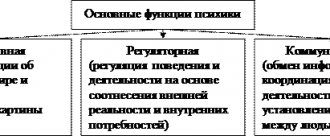Using the Paraphrase technique in managing conflict communications
Buyer: “You can’t organize anything properly! You do everything in one place! No matter what you say, to the forehead or to the forehead! Why do you always have queues, while there are no queues in other stores?”
Administrator: “We can’t place another cashier now. We don’t have one on staff.”
Buyer: “I’m not interested in your problems! Quickly give me the book of complaints!”
How often can we hear or participate in such dialogue? How often does it happen that we swear, shout, insult each other, while the real problem is not worth a damn and can be solved instantly? Or when an angry client comes to us and sends all kinds of curses at us and our company?
In all these cases, people are controlled by emotions by 90%. They are not aware of what they are saying and why they are saying it. What needs to be said or done so that your interlocutor begins to calmly talk about the problem and look for ways to solve it, instead of yelling and insulting you?
Before answering this question, it is necessary to understand a little about the theory of such conflict communication in order to understand why this happens. In my opinion, one of the best theory of conflict interaction is the theory of transactional analysis by E. Berne. I will not describe all aspects of this theory here; there is a sufficient amount of literature on this topic, but I will present only the most basic concepts, in the most easy-to-understand form.
In accordance with the theory of transactional analysis, a person always speaks from one of three positions when communicating: Parent, Adult and Child.
A parent is an attitude of criticizing other people. When we say phrases like: “You always do everything wrong,” “You don’t know how to work,” “You deceive clients,” we speak from the position of a Parent.
Feelings of guilt, self-justification, self-pity on the one hand, and humor and frivolity on the other - this is the position of the Child. “We are not to blame for anything, it was the suppliers who did not deliver the goods on time”, “Excuse us, we won’t do this again” - these are examples of phrases that we say from the position of a Child.
The Adult position assumes that the person is primarily interested in solving the problem. He reasons sensibly and does not allow emotions to prevail over reason. A person in the Adult position asks questions: “How can we solve this problem?”, “What exactly can I do for you?” This is exactly the position we should be in when working with a conflict buyer, and it is this position that we would very much like to take our client to.
The Paraphrase technique can partially solve this problem. Why partially? Because no one guarantees that when using this technique, a swearing and screaming client will suddenly suddenly turn into a reflective and constructive interlocutor. Continued dialogue and additional measures of influence, such as asking constructive questions and other techniques, are required. But within the framework of this article, I will consider only the Paraphrase technique, because it was used personally by me in various situations, and by the participants in my trainings, who confirmed the effectiveness of the tool in feedback.
Paraphrase ( paraphrase , paraphrase ; from other Greek - retelling) - retelling, presentation of the text in your own words. That is, before you begin to answer the client’s question or complaint, you return to him the thought he said in the form of a clarifying question.
For example
Customer words : “Every time I come to your store, I see these huge lines at the checkout counters. Why are all the other ticket offices closed!? Why can’t you open them?!”
Employee paraphrase : “Did I understand you correctly that you are our regular customer and are not satisfied with the fact that we have queues, and also want us to open additional cash registers?”
When a client hears such a question, he has the feeling that he was not only listened to carefully and understood correctly, but as if the interlocutor was reading his thoughts. The task of feedback is fulfilled, because with such a question you show: “I understand you...”
In addition, the question asked must be answered. And while the client is listening to your question, he is focused on what you are saying and a thought process inevitably begins to occur in him. Due to this, some of the emotions go away and the dialogue becomes more constructive.
I heard this idea from Vadim Arturovich Petrovsky, Doctor of Psychology, as part of a lecture on the practical application of transactional analysis methods in psychology.
Using the Paraphrase Technique
The task when using the Paraphrase technique is to remove emotions and leave a dry essence.
But in practice, it is not so easy to immediately correctly understand the idea that the client wants to convey and choose the right words, expressing this thought in the form of a clarifying question. At the same time, observing the main condition - words should not be repeated. In this regard, there are a number of errors that reduce the effectiveness of the technology.
Paraphrase Technique Errors
Repeating the client's statements verbatim is parroting.
If, as a clarifying question, you repeat verbatim everything that the client just told you, most likely it will look either like mockery, or the client will get the impression that you are a fool and do not understand what they are telling you the first time.” in Russian".
Therefore, it is imperative to change the set of words as much as possible and express thoughts in other words. There are words that are quite difficult to replace. For example, what can you replace the word “cash desk” with? Depending on the context, some words that refer to certain physical objects may not be replaced. But if you do come up with a replacement or change the word in some way, it will only be better. For example, the word “cash register” can be replaced with “cash area”, “cash register” and so on.
Add something from yourself, bring your own content or meaning.
If you start fantasizing and distorting the thought the client said to you, he will understand that you did not understand anything of what he said, and you need to repeat it to you again. Moreover, with even greater expression and, for example, starting with the words: “I repeat for the stupid...”
But your task is the opposite. You need to move the buyer from the channel of splashing out emotions and negativity to the channel of constructive reflection.
Subtly narrow the content of the client's words.
The consequences of this error are approximately the same as in the previous case. It is advisable to express the essence of the client’s words as accurately as possible. If it consists of several parts, for example: “You constantly have queues, you sell expired goods and recruit staff from mountainous areas,” then it is best to express his thoughts as accurately as possible, in all details: “I understand you correctly, that you our regular customer (thought 1), and you are not satisfied with the speed of service and the presence of queues in our store? (thought 2) Have you recently purchased an expired product from us (thought 3), and are you also dissatisfied with the level of qualifications of our staff? (thought 4).”
Please note that in this example I have replaced the word “unsatisfied” with the words “not satisfied.” This is done in order to remove emotional words from speech, and instead use more “dry” expressions.
Formal use of technology.
A situation where, without waiting for the client to answer a clarifying question, without allowing him to think about the question and answer, we begin to respond to the complaint. In this case, the technique does not work, because the most important points of this technique are precisely the client listening to the question, thinking about the question, and answering it. And if we start answering right away, we don’t give time to these processes in the client’s head.
Exercise “Kill the Poem”
You can learn how to do correct paraphrasing using the example of poems. All poems are filled with a large number of “colors” and metaphors. The more emotions a poem evokes, the more successful it is considered. And the task of the Paraphrase technique, on the contrary, is to remove all emotions, colors, and leave only the “dry” essence of the problem. And without these things, the poem completely loses its value. Therefore, in this exercise you need to “kill” the poems using Paraphrase.
For example
Excerpts of the poem: “I remember a wonderful moment. You appeared before me like a fleeting vision, like a genius of pure beauty.”
Paraphrase: Do I understand you correctly that you remember the moment we first met?
“It’s nice to think by the bed. But you know: shouldn’t we tell the brown filly to be banned from the sled?”
Paraphrase: if I understand you correctly, are you encouraging me to engage in active recreation, ride horses?
It's time, beauty, wake up, open your closed eyes towards the northern Aurora, appear as the star of the north!
Paraphrase: Based on your words, are you telling me to wake up and start the day?
Try using Paraphrase on the following examples: “The lonely sail is white. In the blue sea fog! What is he looking for in a distant land? What did he throw in his native land?”, “The moon, like a pale spot, turned yellow through the gloomy clouds, and you sat sad. And now... look out the window,” “I loved you: love, perhaps, has not completely died out in my soul; But don't let it bother you anymore; I don’t want to make you sad in any way.” “Goodbye, my friend, goodbye. My dear, you are in my chest. A destined separation. Promises a meeting ahead”, “From the first days of the bitter time, In the difficult hour of the native land. Not joking, Vasily Terkin, You and I have become friends,” “There is a terrible judgment: it is waiting; He is not accessible to the ringing of gold, and he knows thoughts and deeds in advance.”
Now, paraphrase real claims from your field. You can try these examples from retail:
- “Your store constantly breaks the law and sells expired goods. I think it’s time to file a complaint against you with Rospotrebnadzor.”
- “This so-called employee insulted me with the very last words. What did I do to deserve this, that I bring money for his salary?! Or maybe he personally didn’t like me for some reason? Tell me what?!”
- “I’m telling you again, I want to wrap this box with tape! I don't care about your stupid laws that were invented by idiots. He said wrap it, then wrap it!”
- “Your cashier regularly cheats people! I stood and watched her. She probably already comes to work in a Mercedes, she scammed so many people out of money. Horror!"
- “Why did your packages suddenly become paid!? They were always free, but now suddenly they’re paid! Who decided this?! As your regular customer, I demand free packages!”
- “Yes, I’m not interested in your problems! If you indicated that an item is being sold at a discount, then you must sell it at a discount! I don’t care if you wrote somewhere in small print that this is only with discount cards!”
Thus, Paraphrase, when performed correctly, provides the following advantages:
- By asking clarifying questions, you begin to control the conversation.
- The client is convinced that you listened to him, understood him, and he gets the feeling that you will now solve all his problems.
- When a person is asked a constructive question, the thought process is activated during listening and answering, which partially removes unnecessary emotions.
- By returning the client’s own thought in a modified form, removing unnecessary “colors” and emotions, you help the client understand what he really wants and how this situation can be resolved, that is, transfer him from the Parent or Child position to the Adult position.
The described technique is a common tool in the field of communicative competence and is described in a large number of sources. After the trainings, I always collect feedback from the participants on the results of applying the learned techniques. And based on the data obtained, I can say that the Paraphrase technique really works in most claims and conflict situations.
Teamwork
A team is a group of people of up to 7-9 people, united by a common goal and common responsibility with complementary functions. The goal of the team is to achieve beyond the result, to perform better work, to exceed the plan.
When creating a team, the work team goes through several stages. Let's look at the example of the Takman model.
- Formation. Team members critically evaluate each other's professional and personal characteristics, both others and themselves. And often at this stage there are mass dropouts. The result of passing the stage: the formation of an advance of trust - “we believed in each other and will try to work together.”
- Clarification of relationships - “grinding in” of new partners to each other.
- Agreement on rules. We immediately stop any conflict and turn it into a constructive discussion. There is a regular exchange of skills and experience. All team members are interested in helping each other, thanks to this, the overall literacy of the team increases, including related areas - a kind of collective intelligence appears, i.e. your knowledge, your horizons.
- Effective work. At this stage the team reaches its maximum. We support each other, exchange opinions, brainstorm, help each other. Due to this, work goes faster and more efficiently. People are ready to work more based on enthusiasm alone, i.e. They think about work even outside of working hours. But there is also a pitfall : all team members grow, but the growth rate may be different. It depends on the input professional data and readiness for training. Some grow slower, some grow faster. And there are employees who grow the fastest, and he already understands that he has taken everything from this team, this is a dead end (ceiling) for the team. The most effective employees leave the team for promotions. Often this is the team leader.
- Dying of the team. Due to the loss of the leader at the 4th stage, there is a loss of effectiveness, which leads to disintegration.
Any team will go through these 5 stages.
Team Roles
Meredith Belbin is the author of the theory. Every team member is eventually assigned a specific role. Moreover, one person in a team can be a bearer of several team roles.
So, what roles should be in the team for it to be as successful as possible:
- A manager is a “headhunter” in the labor market. This is a person who has empathy and can predict the emotions and feelings of others. He is positive, he sees potential in each team member and due to this he can choose a task for everyone that allows them to reveal themselves to the maximum.
- The supplier (not in terms of purchasing) is always a pronounced extrovert; he is responsible for the team’s communications. He brings ideas from outside to the team, but he is not an inventor. He is an intermediary between the team and the outside world; he represents the team, presenting the results of its work.
- The mastermind is the soul of the team and is responsible for the microclimate. He will never allow team members to quarrel and smoothes out any tensions in relationships. His very presence improves the morale of all team members.
- The idea generator is the inventor of the team. It can generate unique, creative solutions. He comes up with his own ways to solve problems.
- The worker bee is the “conscience” of the team. He puts the interests of the team above his own interests.
- The motivator is the “navigator” of the team. He helps team members move in the right direction and is results-oriented. He monitors the schedule for completing assigned tasks, monitors the quality and quantity of the product. His presence on the team prevents others from wasting time.
- The controller is the main skeptic, critic in the team. Usually such people are not taken to the team, but he is needed. Possesses critical thinking. His task is to see negative aspects and pitfalls in a timely manner and inform the team.
- An analyst is an independent expert. He can conduct an independent analytical review and make calculations. This person always understands the subject area.











